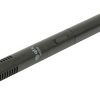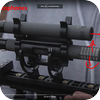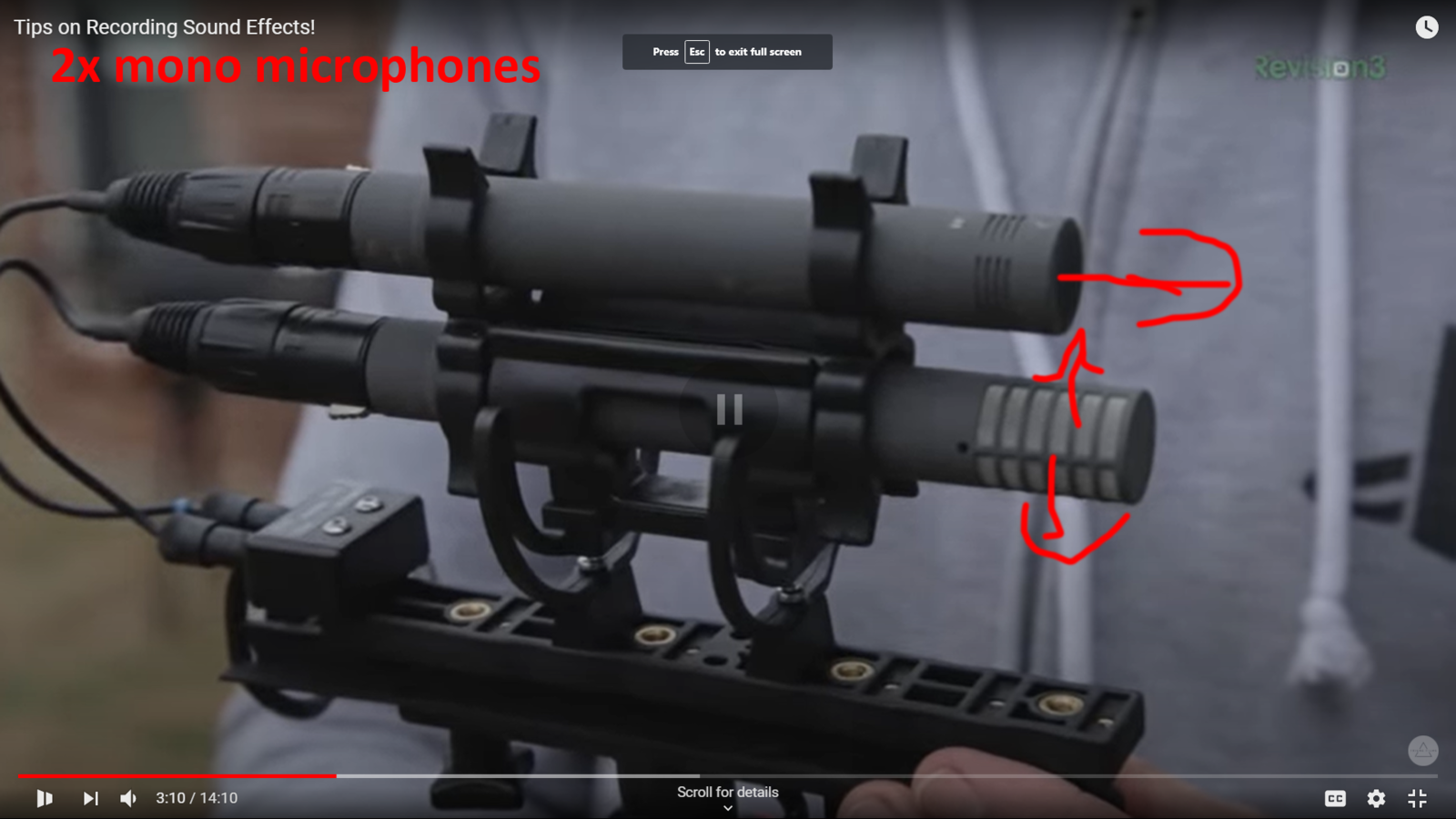Hey guys (Im very new to the audio production world, but need to learn the basics to help me in my line of work (Videography)
Im trying to record some sounds outside for a video game project (professional level)
(Fast forward to 2:51 - 4:37)
So, my idea is to buy 2x SG300 GTX's, on a frame.
1. Is it possible to edit the microphone setup, so one microphone record straight, and the other one record left and right? please advise :)
Comments
@Boswell Thanks for the response - (although, to be honest, im
Thanks for the response
- (although, to be honest, im slightly lost in the main body of text)
Questions
1. If you advise against using shotgun microphones for m-s recording, what would you use?
2. What do i need to mix?
3. Apogee MINI - mp, are you on about the actual item in your text link, or just the apogee mini mp charger?
4. Where do i get that frame, which is holding both shotgun mics?
Please :)





Hi, and welcome! Yes, the two-microphone technique shown in tha
Hi, and welcome!
Yes, the two-microphone technique shown in that video is what we call Mid-Side (M-S) in the audio recording world. To convert to conventional Left-Right (L-R), the signals from the M microphone and the S microphone are put through a sum-and-difference matrix. This simply adds the S to the M to create L, and subtracts the S from the M to get R. Interestingly, the matrix is completely reversible; if you feed it with L-R you get M-S out. There is a gain term that needs a post-matrix correction of up to 6dB.
The matrix can be used during recording to generate conventional L-R, resulting in the camera operator and the subsequent mix engineer not having to know that the M-S technique was used. If you instead choose to record the M and S signals, you would apply the matrix during mixdown. The advantage of the first method is that there is no change to the headphone monitoring. With the second method. you would need the matrix to convert to L-R for feeding a headphone amplifier for monitoring during the shoot, and then also apply it at mixdown. There are mixing advantages to retaining M-S through to the mix, which we can go into in more detail later if needed.
I would advise against using shotgun microphones for M-S recording. When matrixed with the S microphone (which has to be figure-8), it results in a very lumpy polar pattern.
Some microphone pre-amplifiers have built-in M-S decoders. A high quality one, popular for film work, is the Apogee Mini-MP. It's an older product now, but still available on the used market. Like the other products in Apogee's mini range, it runs from car battery 12V, so is convenient for field recording.
Editing M-S tracks is perfectly possible, and provided you keep in mind what you are dealing with, is not any more complicated than L-R in terms of timing, fades etc.